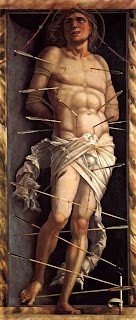In general children
under ten years old cannot learn grammar through a focus on rules. We can see
this through observation and we know this through our reading of Piaget et al.
The logical thinking, reasoning and generalization needed to be able to work
from grammar rules is something that only really starts developing from the age
of eight or nine onwards.
So children
can’t learn grammar? Of course, they can. They learn the grammar of their first
(home, mother) language incredibly successfully. They do so through a great
deal of exposure to it from everyone around them: hearing songs and stories,
listening to caregivers and siblings, having access to media like TV and radio.
They spend a great deal of every day of their early lives just listening and
trying to make sense of what they hear. Then they use it when they need to communicate.
What we as
teachers of children learning English as a second, additional or foreign language
must ensure for them to be able to make sense of this new language is to:
·
Provide
plenty of exposure to English, by using it as much as possible ourselves in the
class room, telling stories, singing songs and just chatting to the learners in
English
·
Ensure
that the language input they get is supported by plenty of meaningful clues to
meaning like body language, gestures, facial expressions, visuals
·
Allow
children to play with the sound and rhythm of language
·
Encourage
children to communicate with whatever English they have
·
Give
positive feedback and praise them so they keep trying and having fun
·
Give
children tasks that help them notice the patterns of language they have been
exposed to like the two tasks below which should be copied and cut up. Make
them nice and big so that children can work in small groups at their tables or
on the floor. And be careful to cut them in such a way that it's not possible to match them just by putting two pieces together and see where they have been cut!!!
A.
Match
the questions to the answers:
What time is
it?
|
It’s half past two.
|
What’s her
name?
|
It’s Jenny.
|
What colour are
Caroline’s eyes?
|
They are brown.
|
Whose book is
this?
|
It’s John’s.
|
How many desks
are there in the classroom?
|
There are twenty.
|
Where is my
school bag?
|
It’s in the kitchen.
|
How old is Mr
Jones.
|
He’s forty-one.
|
Why is Tommy
happy?
|
Because it’s his birthday today.
|
Who is he?
|
He’s our English teacher.
|
When are we
going to visit granny?
|
On Sunday.
|
B.
Match
the two halves of the sentence:
She
|
is a woman.
|
They are
|
grey elephants.
|
It is
|
a cat.
|
He
|
is eight.
|
He is
|
happy.
|
It is a
|
book.
|
She is
|
a tall girl.
|
She is a
|
teacher.
|
They
|
are big boys.
|
He is a
|
funny boy.
|















